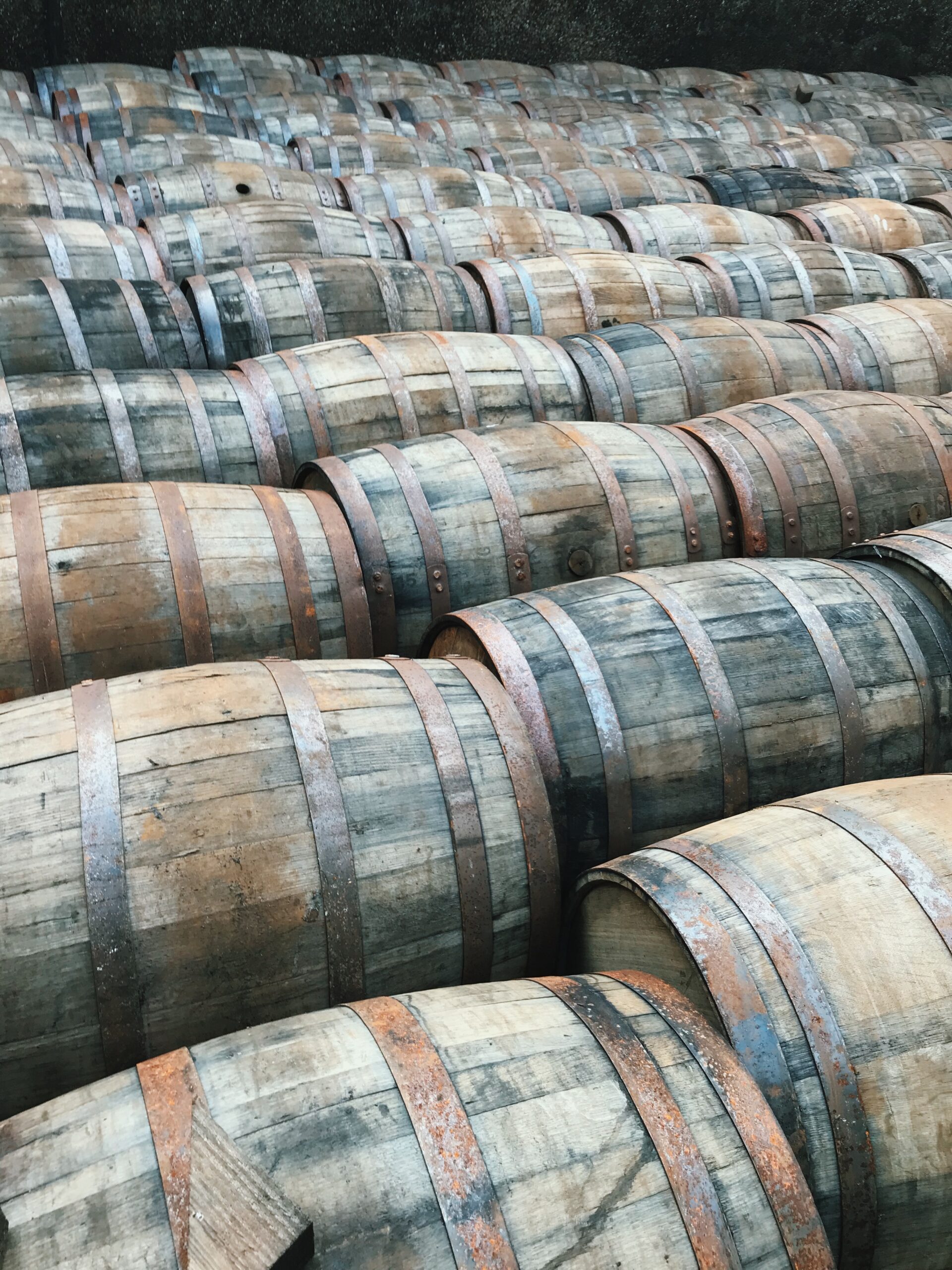A whisky cask is a vessel made of oak that holds spirit as it matures. It is watertight and held together by natural tension – there are no nails, glue, sealant, or anything similar used during construction. Just four things create a barrel – oak staves, metal hoops, reed stems and the skill of the cooper.
From tree to cask
An oak tree cannot be cut down and instantly used for making a whisky cask. The wood needs to undergo several stages before it is ready for coopering. Trees are harvested only when they have achieved the required maturity – this is when they reach a minimum of 7.5 metres (25 feet) tall and one metre (3 feet) in diameter. They are often left longer as the larger the tree, the more individual staves can be created.
The harvested trunks are transferred to a sawmill, where they are sawn into planks. Only older wood from the centre of the trunk is used, which is known as heartwood. A skilled sawman will get the maximum number of staves from each plank. Each stave must then be naturally airdried before it is ready to be made into a barrel. This takes two to three years and removes moisture from the wood.
Once this period of airdrying is complete, the staves are exposed to steam for a short period. The heat and humidity make the oak more pliable, and the staves can be manipulated into the curved shape required.
Tools of the trade
Nowadays, machinery and technology aid the cooper in many of the aspects of building or repairing a cask. But there are a set of traditional tools, each with a different function, that coopers learn to use during their apprenticeship. There are over 20 different tools in each cooper’s armoury, but some of the most common include:
- Hammer – a heavy metal hammer (approximately 3lbs/1.35kg in weight used for driving the hoops down the side of the barrel
- Hoop Driver – a flat metal wedge with wooden top used to drive hoops down the side of a barrel when hit by the hammer
- Draw Knife – two styles are used. A rounded draw knife is used to hollow out and alter the concave curvature on the inside of a stave. A flat draw knife does the same for the convex curvature on the exterior
- Adze – an elongated metal hammer with a sharp tip at one end. Used to smooth out the end of staves
- Cooper’s compass – a special set of compasses that help determine the correct size for the heads/ends of the barrel
- Croze – a cutting tool that gouges a groove at the end of the staves once the barrel is assembled. The head/end then slots into this groove
- Topping Plane – a plane that cuts a perfectly flat surface for the croze to ride on
- Chiv – a large circular plane that levels out the interior of the barrel once assembled.
Building a whisky cask
There are currently over 200 coopers working at several locations across Scotland, with a further 40 or so serving their apprenticeships. This has dropped from over 1,000 in the early 1980s. Modern time-saving techniques and technology, the use of metal casks in brewing and a drop in traditional craft skills are all to blame. But it is also a rise from the dark days of the early 2000s when there were just over 150 registered coopers in Scotland.
A whisky cask, whatever its size, uses 32 staves on average. These are different widths, and the cooper will arrange them broad, narrow, narrow, broad, narrow, narrow to begin forming the circular shape. This is done using one of the metal hoops as a guide, working clockwise and using their body as support.
Once the staves are standing straight and level, another hoop is put around the middle and the staves beaten out with a hammer from the inside to make sure everything is sitting flush. A croze is then used to score out the groove that the head of the cask will sit in.
Metal hoops, six in total, are then beaten down using a hammer and hoop driver to make the cask solid and close any gaps – three are added to one end, before the cask is flipped to add three to the other end.
The heads/ends are sized using a cooper’s compass and constructed using 7-8 straight staves to fit exactly. The head is tapped into the groove create by the croze. Bullrush reed is used to seal the head – this is jabbed into the gap between the head and the stave to make that section of the barrel watertight. This is repeated on the other end of the cask.
Once built a bung hole is drilled into one of the broad staves to allow filling, emptying, and sampling during the cask’s life. This can also be drilled into the head. The cask is then ready to be charred or toasted on the inside.
For this the heads are removed, and the interior of the cask is exposed to fire. Varying times give varying effects. Charring and toasting caramelises natural sugars and compounds within the wood and creates small cracks and fissures on the surface. This gives the whisky a larger surface area to interact with when maturing. The cask is then ready to be fill with whisky.




